Remember in high school English classes when you started every paper with a “since the dawn of time” cliché? Like if you were writing a paper on cats, you’d start it off with “For centuries, cats have been adored by humans.”
What’s wrong with so many blog intros today is that they still use that same worn-out formula, and it always falls flat.
Especially when it comes to B2B content. Many of your readers are likely industry veterans who don’t need you to rehash the basics. And when you talk down to them with trite clichés, it shows that you don’t really understand them or their needs. So why would they keep reading?
Instead of kicking things off with a tired, formulaic lede, you need to breathe new life into your introduction. Here’s how to ditch high school intro syndrome and level up your content.
TL;DR checklist: quick tips for better intro-writing
- Highlight a pain point
- Outline expectations
- Sharpen your wit
- Be inquisitive
- Keep it real
- Play up the tension
- Stress the benefits
- Be offbeat
- Get quotey
- Save the intro for last
Why do so many blog intros fall flat?
Burnout is real. Over half of all workers are feeling more tired, less focused, and deeply unmotivated, but creative types are feeling the burn the hardest. Over 61% of creators experienced burnout in the past year, and that ick is bleeding into your copywriting. 😷
And with over 600 million blogs on the world wide web, a draggy blog won’t get you (or your brand) anywhere.
But burnout isn’t the only thing de-fanging your blog intros. SEO tunnel vision is also to blame.
When so many brands write with SEO as the goal, they end up over-optimizing their intros for generic seed keywords with no clear tie-in to the brand’s actual value prop. It can feel more than a little soulless when you’re writing for Google bots instead of your readers. And when you’re feeling unmotivated, you’re more likely to burn out, and the whole vicious cycle starts all over again.
So let’s break it!
Recenter readability when it comes to intro-writing, and you’ll feel much more connected to the content you’re writing. And when you’re writing for humans rather than word robots, you can breathe new life into your content and break out of the content marketing echochamber.
10 ways to hook your reader with a truly standout blog intro
No matter how swoonworthy your content is, if your introduction falls flat, readers won’t bother scrolling down. With an average bounce rate of 47%,many sites have sub-par content that has readers clicking the other way.
So how can you meet visitor’s expectations and write an intro that doesn’t send them scurrying back to the search results page? If you follow these tips, you can create a pitch-perfect intro that hits the mark every time. Let’s get into it!
1. Highlight a pain point
Your reader has a problem. And you know how to fix it. Good content offers value, and in the B2B world, that often means solving a problem.
While B2C’s path to purchase is way more straightforward, B2B writing requires you to put your thinking cap on in order to diagnose and solve your reader’s business problems.
But before you iron out the kinks, you first need to acknowledge that the problem exists. By emphasizing a pain point in your intro, you immediately draw readers in, letting them know they’re in the right place. 🩹
To really nail it, Try agitating the pain point first, and then hint at a solution that only you can deliver.
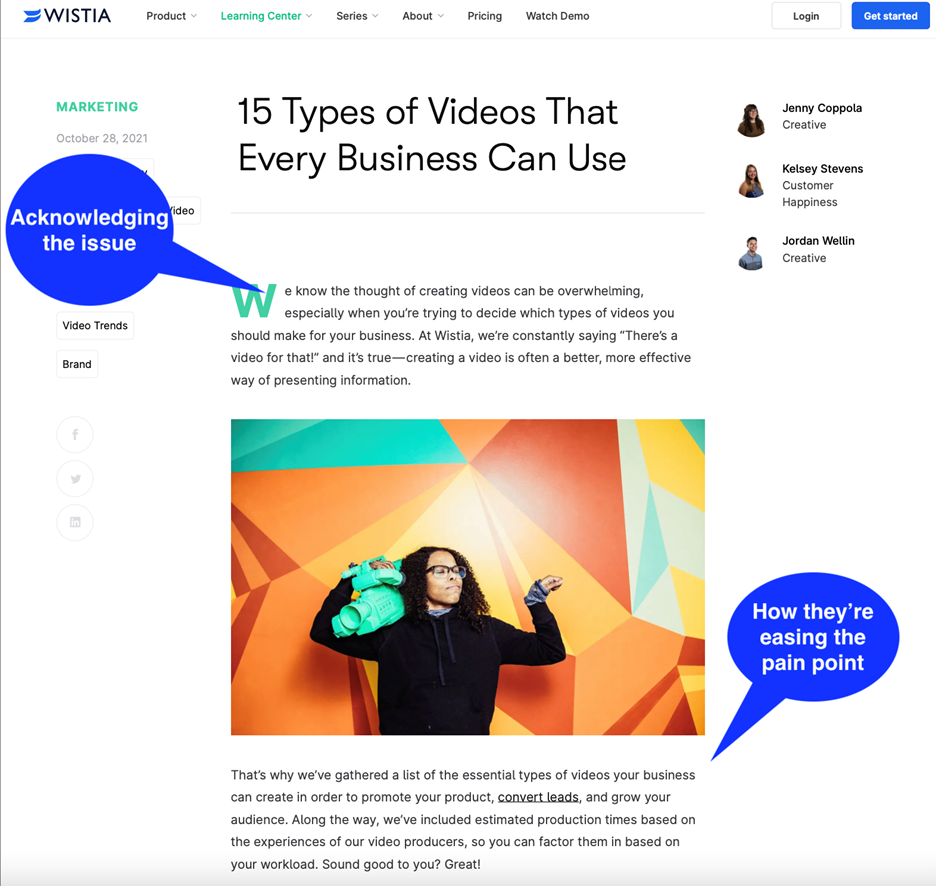
Source: Wistia
2. Outline expectations
Remember English 101 and the all-important thesis? The same principle applies here.
Once you introduce the problem, you need to offer a sneak peek into how you’re going to solve it. If you don’t show your reader how you’re going to solve the issue, they’ll lose patience and click away.
Show your audience that this article is worth their time. A good formula to follow is answering:
- What will be covered
- What order it will be covered in
- What the audience can expect to take away.
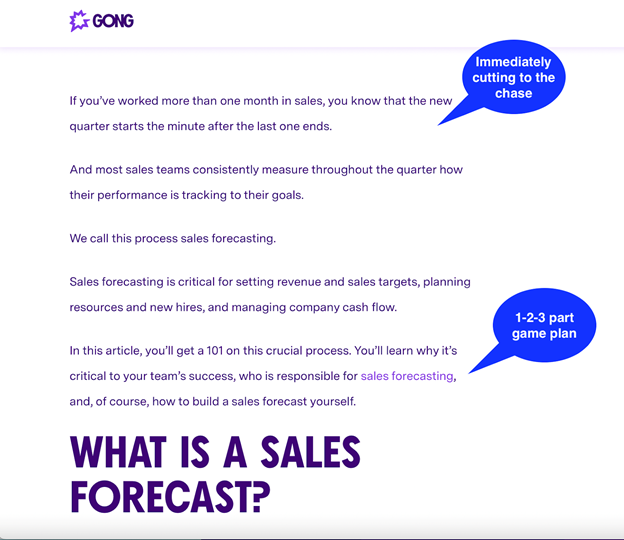
Source: Gong
It’s rare for visitors to read through content from top to bottom. But by laying out your game plan in the intro, readers can navigate to the section they need before they decide whether the content is worth their time.
3. Sharpen your wit
Everybody loves a little humor. Laughter is not only the best medicine, it’s also a “boring-to-boring” B2B cure-all (at least as far as intros go).
Whether you kick things off with a meme, a quip, or a pun, if you can get your reader laughing, they’re hooked.
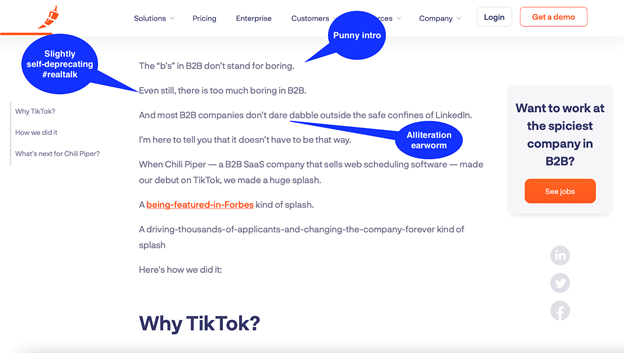
Source: Chili Piper
4. Be inquisitive
A tried-and-true method for drawing your reader in is simply asking a question.
When you ask a leading question in your blog intro, you encourage the reader to puzzle over the answer. And when they’re actively thinking about the topic and how they would solve it, they’ll be more receptive to your answer.
Example:
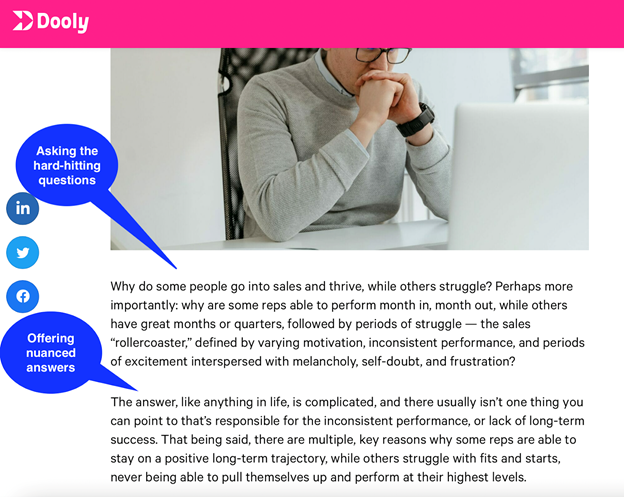
Source: Dooly
5. Keep it real
When it comes to writing compelling intros, don’t be afraid to get personal (but not too personal).
Talk about a time you struggled with the same issue you’re writing about now. It’ll help your readers relate to you, building an emotional connection that’ll keep them plugged in and reading.
Example:
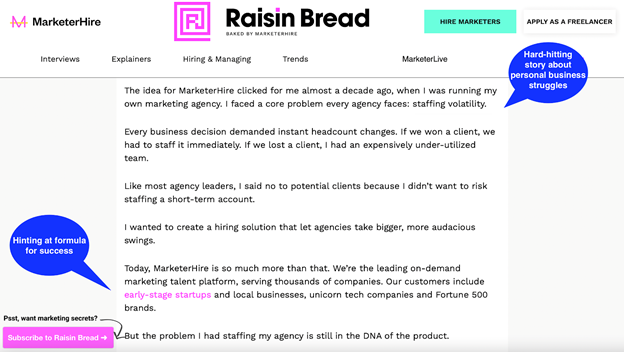
Source: MarketerHire
6. Play up the tension
Everyone loves a little bit of drama, and good drama thrives on conflict. Strong storytelling plays up the tension between characters or themes to keep the audience locked in, and strong content should do the same.
You can create confrontation in blog introductions by challenging a longstanding belief, debunking a popular misconception, or confronting a controversial issue (in your niche, of course) head-on. Stoke their interest.
Example:
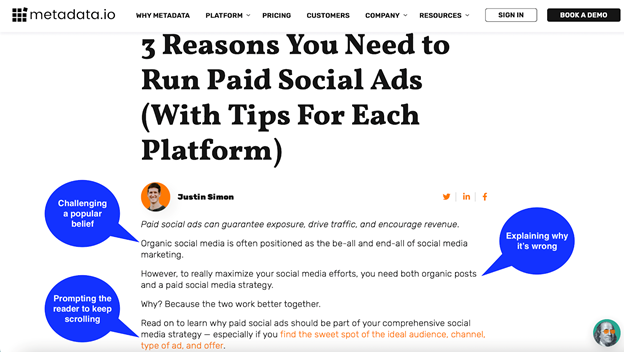
Source: Metadata.io
Readers will either a.) agree b.) disagree or c.) ask why you’re challenging the topic.
In each scenario, they’ll want to keep reading to learn more. And that’s the mark of eye-catching content.
7. Stress the benefits
Many users read blogs to improve their lives or businesses. Readers want answers, and you need to provide them. Great intros have a “show me the money” mentality that stresses the benefits, whether you’re outlining how to make waffles or how to drive conversions.
Craft a compelling intro by stressing the benefits of your content. If they keep reading, how will this information improve their lives? And if you have statistics, use them.
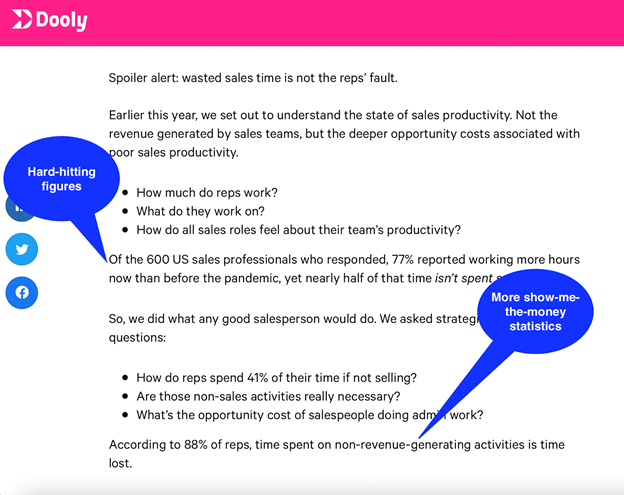
Source: Dooly
8. Be offbeat
Don’t be afraid to get quirky with your intros.
Offbeat analogies and oddball humor pique readers’ interest, helping you stand out from the herd. Whether you put a clever spin on a cliché or get funky with your similes, making seemingly odd connections can make your content more scroll-worthy. Just make sure it isn’t too niche, or things could get confusing.
Example:
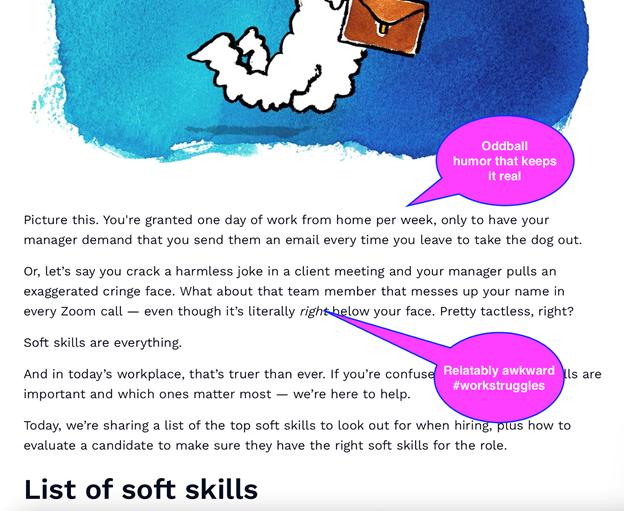
Source: Breezy HR
9. Get quotey
Sometimes, even top content writers need a little expert help.
One of the best ways to bring a voice of authority into your content is to start your piece off with a piece of expert advice.
Incorporating quotes not only lends credibility but can also back up your thesis or offer a helpful framework you can build off of. But whether you use a quote that sums up a common belief or lays the groundwork for a counterargument, make sure your argument is original.
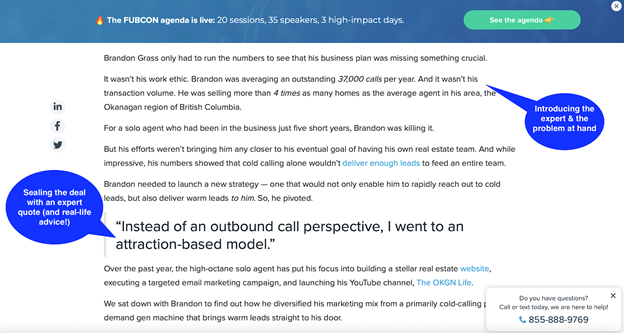
Source: Follow Up Boss
One quick caveat on this one: Make sure that you’re not using quotes as a crutch for lazy writing. To be sure your quotes are fresh, try pulling advice from unexpected voices or source original quotes from industry leaders.
10. Save the intro for last
Wait, what? Isn’t the whole point of the intro that it’s, y’know, first?
Well, yes. The introduction is the first thing your audience reads, but it should be the last thing that you write.
When you save your intro for last, you already have your argument ironed out in the body paragraphs. Then, you can use those main points to guide your intro, saving you time and space on the page. Not only do you understand the blog topic better after you’ve spent hours writing the marrow of the piece, but you’ll also save yourself time if your thesis evolves as you’re writing.
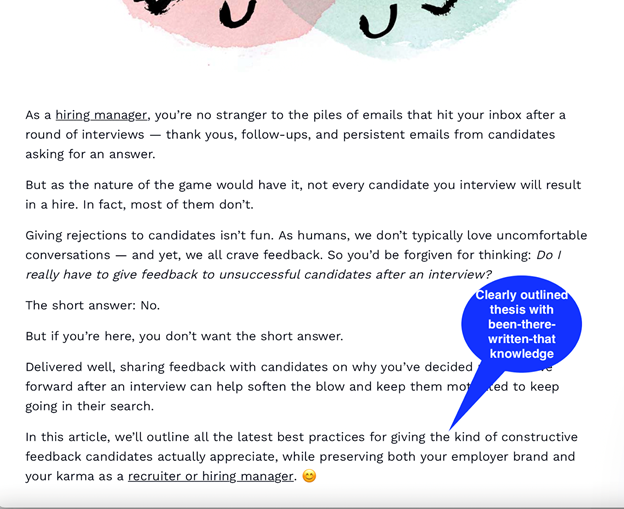
Source: Breezy HR
You can jot down intro ideas and notes as you write, but save the best for last and finalize the intro when you’re done with the rest of the post. ✅
Looking for top-notch content tailored to your brand?
We’re a done-for-you copywriting agency that creates high-quality content every time. If you’re ready to take the plunge and elevate your B2B brand messaging, we’ve got your back.
Schedule a chat with our experts today!
Avery is a freelance copywriter and web content expert. When she’s not writing, she’s probably at an estate sale on the hunt for vintage clothing or updating her Spotify playlists. Based in New Orleans, Avery is passionate about writing approachable content that is engaging and well-researched!
